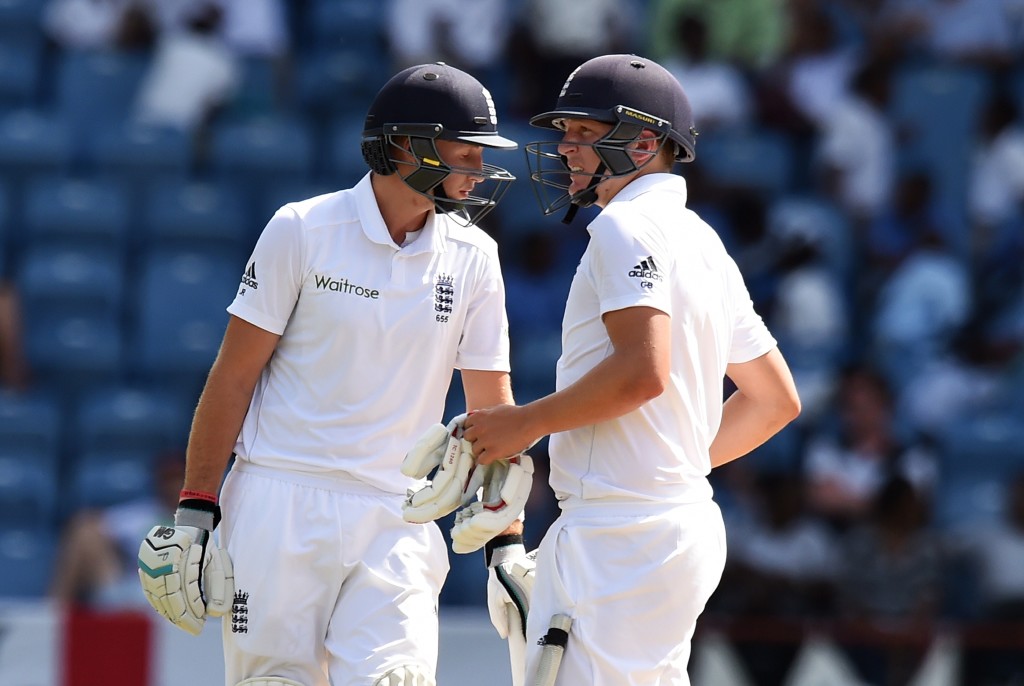
There was no masking the cracks on a sun-baked wicket at Lord’s last week, but England’s own were filled with the exultation of victory.
The scorecard told the story of an emphatic triumph for Joe Root yet the more discerning eye would have noted that a bungling South Africa handed England’s new captain a heap of help.
The Proteas suffered through two wicket-taking no balls, myriad dropped catches and one toss that they would regret losing, with the pitch shedding more flakes than London’s ice cream vans by day four.
This is also a touring side that had been severely weakened by AB De Villiers’ refusal to play Tests, captain Faf Du Plessis’ absence and a rash of Kolpaks over the winter that had robbed them of depth.
In contrast, besides Chris Woakes, the England selectors have picked what they believe is the best Test team from a fully fit and vast pool of players.
But no matter the personnel, the same, huge problems in the top order still persist. Alastair Cook and Joe Root are England’s two pillars of strength – which makes the flimsiness of those who bat between them all the more glaring.
Since the Pakistan series over here in 2015, on just one occasion in 43 innings (Keaton Jennings v India) has an England opener not named Alastair Cook scored a century. Only ten times have players reached a half-century.
It gets worse still for No3s and No4s who do not go by the name of Joe Root. In the same time frame, the other tryouts at those positions have mustered three half-centuries and a ton between them, two of those scores belonging to middle-order maestro Moeen Ali.
So England can celebrate the dawn of a new era, but this brave new world looked mightily familiar as Root’s brilliance and Cook’s doggedness bailed them out in consecutive innings.
The answer to this interminable conundrum partially lies with Root himself. Though he played a major part in welcoming Gary Ballance back to the Test team, he refused to budge from his preferred No4 spot.

Joe Root and Gary Ballance at the crease together for England
Forget Ballance’s past travails in an England jumper – any one averaging more than 100 in the first division of county cricket is worth another go. But he has been scoring all of those runs at No4 for Yorkshire, and as a player who has twice failed for his country in the past, could do with all the continuity he can get.
So in went Ballance after Keaton Jennings met his maker just three overs into the Test match, and a new, seaming ball quickly nibbled away at his newly accrued confidence.
Cometh the first hour, cometh the man, as is so often Root’s wont. There to play the hero yet again with his team in peril.
His play can never be criticised but his rationale for batting at No.4 should. With the (usually brief) opening stand broken Root is best served shoring up an end, taking the shine off the ball, putting out the fire before it becomes an inferno – and most importantly giving a lesser talent a breathing room down the order.
101.9 - Gary Ballance has averaged 101.9 so far in the 2017 @CountyChamp; currently only @KumarSanga2 (108.6) has a better rate. Three. pic.twitter.com/aIVIh963nN
— OptaJim (@OptaJim) July 6, 2017
As for Jennings, on the basis of form he should never have been picked to open with Cook. He had not posted a half-century in eight innings – in the second division of county cricket – before a good performance against South Africa A rescued him in the eyes of the selectors.
Instead his berth should have gone to a former team-mate of his in Mark Stoneman, who since moving to Surrey from Durham over the winter has been by far the most consistent opener in the first division.
So as the series rolls on to Trent Bridge, one batsman is faced with playing himself into form while another is chasing comfort.
Doesn’t quite sound like a combination that is about to solve England’s top-order blues, does it?